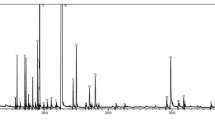Abstract.
Formation of germ tubes by Candida albicans has been assumed as a putative virulence factor. Local anesthetics (LAs), e.g., lidocaine and bupivacaine, are known to inhibit germ tube formation. The study confirmed this observation for the novel drug ropivacaine, although it was less potent than the former two drugs. Hypothesizing that the effect is due to blockading ionic channels, we exposed Candida albicans to selective calcium blockers, i.e., nifedipine and verapamil, and to a general blocker of ionic channels, i.e., lanthanum. All blockers inhibited germ tube formation. The effect was dose-dependent and pH-independent. Addition of calcium reverted the effect of the blockers as well as the effect of lidocaine and ropivacaine. The study suggests that the inhibitory effect of LAs on germ tube formation by C. albicans is due to blockade of ionic channels, particularly calcium channels. Therefore, LAs can affect morphology and probably also the pathogenesis of C. albicans.
Similar content being viewed by others
Author information
Authors and Affiliations
Additional information
Received: 19 May 1999 / Accepted: 5 October 1999
Rights and permissions
About this article
Cite this article
Rodrigues, A., Pina-Vaz, C., Mårdh, PA. et al. Inhibition of Germ Tube Formation by Candida albicans by Local Anesthetics: An Effect Related to Ionic Channel Blockade. Curr Microbiol 40, 145–148 (2000). https://doi.org/10.1007/s002849910030
Issue Date:
DOI: https://doi.org/10.1007/s002849910030




